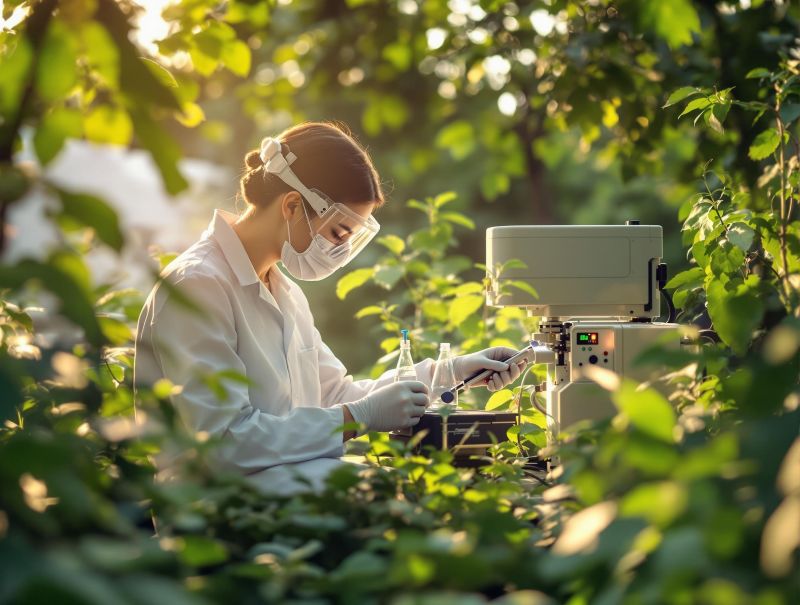
Eco-Friendly Adhesive Definitions
Types of Eco-Friendly Adhesives
Importance in Environmental Impact
Methods for Adhesive Application
Latest Trends in Eco Adhesives
Strategies for Reducing Impact
Future of Adhesives in Filtration
Frequently Asked Questions (FAQ)
Eco-friendly adhesives play a pivotal role in reducing environmental impact in the filtration industry. These materials are specifically designed to limit the emission of volatile organic compounds (VOCs) and are often developed using renewable or sustainable raw materials. For example, some adhesives are plant-derived, while others utilize water-based formulations to support low-emission manufacturing. These innovations reflect a broader shift toward cleaner, greener industrial practices.
Several types of environmentally friendly adhesives are reshaping the way filters are assembled and applied:
Water-based adhesives, ideal for minimizing VOCs and simplifying cleanup.
Plant-derived adhesives, made from renewable bio-materials that support sustainable sourcing.
Biodegradable adhesives, which decompose naturally over time, reducing long-term waste.
Hot melt adhesives with bio-based components, offering strong bonding without toxic solvents.
Each type serves a specific function while contributing to a more sustainable production cycle.
In the filtration sector, selecting eco-conscious adhesives contributes directly to reducing industrial emissions and waste. These adhesives not only help lower VOC levels but also reduce reliance on fossil-fuel-based ingredients. Their use reflects an organization’s commitment to sustainability, regulatory compliance, and environmental stewardship. Whether water-based, plant-based, or biodegradable, such adhesives provide an effective route to improve a company’s eco-profile without sacrificing filter performance.
To fully benefit from eco-friendly adhesives, choosing the right application technique is essential. Common methods include:
Spray application, which allows for uniform coverage with minimal excess
Roll coating, best suited for water-based adhesives due to precision and control
Bead dispensing, effective for targeted, efficient application with minimal waste
Matching the adhesive type with the optimal application method ensures cleaner processing and better overall performance while supporting waste reduction goals.
Recent trends in adhesive technology underscore the rise of sustainable innovation:
Increased adoption of bio-based formulations, offering strength with reduced environmental harm
Expanded use of low-VOC, water-based systems
Growing demand for biodegradable adhesives that naturally break down
Development of hot melt adhesives with renewable content, combining eco-efficiency with application versatility
These shifts indicate that sustainability is becoming an industry standard rather than an exception.
To actively reduce environmental impact, companies can implement several strategic measures:
Use adhesives with low VOC emissions and renewable sourcing
Optimize application methods to reduce overuse and waste
Incorporate biodegradable adhesives for easier end-of-life disposal
Educate teams on sustainable handling and storage practices
These actions not only support the planet but also create long-term cost efficiencies and align with ESG goals.
The future of filtration adhesives is closely linked to advancements in sustainable materials. Emerging innovations will likely focus on:
Higher bio-content in formulations
Improved biodegradability without sacrificing performance
Integration of adhesives into circular manufacturing processes
Compliance with increasingly strict environmental regulations
Adhesive technologies that deliver both environmental and operational value will set new industry benchmarks in the years ahead.
Q1. What are eco-friendly adhesives?
Eco-friendly adhesives are bonding materials formulated with low VOC emissions and/or renewable or biodegradable ingredients, designed to reduce their environmental footprint.
Q2. Why are they important in the filtration industry?
They reduce harmful emissions, contribute to safer air quality, and align with sustainability goals without compromising filter efficiency or strength.
Q3. What types are commonly used?
Water-based, plant-derived, biodegradable, and hot melt adhesives made from bio-resins are among the most commonly used in eco-conscious filtration.
Q4. What application methods are recommended?
Spray, roll, and bead dispensing methods help optimize material use and minimize waste, especially when paired with low-VOC or biodegradable adhesives.
Q5. What trends are shaping the future of green adhesives?
Sustainable innovation trends include increased bio-content, low-emission water-based systems, and biodegradable solutions suited to industrial environments.
Q6. What strategies help reduce environmental impact?
Switching to bio-based adhesives, applying materials precisely, and choosing compostable or degradable options all reduce a product’s environmental load.
Q7. What does the future hold for adhesives in filtration?
Eco adhesives will likely incorporate advanced green chemistry and material science, helping filtration manufacturers meet regulatory and sustainability targets.
Q8. How do these adhesives support broader sustainability goals?
They reduce reliance on petroleum resources, minimize waste, and help companies achieve carbon-reduction commitments and regulatory complianc